-
 Bitcoin
Bitcoin $82,509.8850
-2.52% -
 Ethereum
Ethereum $1,800.3816
-3.46% -
 Tether USDt
Tether USDt $0.9996
-0.02% -
 XRP
XRP $2.0537
-1.80% -
 BNB
BNB $589.5226
-1.44% -
 USDC
USDC $1.0000
0.02% -
 Solana
Solana $116.3439
-6.85% -
 Dogecoin
Dogecoin $0.1595
-5.58% -
 Cardano
Cardano $0.6479
-2.79% -
 TRON
TRON $0.2366
-0.33% -
 Toncoin
Toncoin $3.5766
-9.59% -
 UNUS SED LEO
UNUS SED LEO $9.3922
-0.34% -
 Chainlink
Chainlink $12.7758
-5.57% -
 Stellar
Stellar $0.2586
-2.92% -
 Avalanche
Avalanche $18.1038
-3.99% -
 Sui
Sui $2.2274
-5.69% -
 Shiba Inu
Shiba Inu $0.0...01219
-1.98% -
 Hedera
Hedera $0.1627
-3.05% -
 Polkadot
Polkadot $4.0427
-1.01% -
 Litecoin
Litecoin $82.8658
-2.85% -
 MANTRA
MANTRA $6.3993
1.10% -
 Bitcoin Cash
Bitcoin Cash $298.9153
-0.95% -
 Bitget Token
Bitget Token $4.4795
-2.24% -
 Dai
Dai $0.9999
0.01% -
 Ethena USDe
Ethena USDe $0.9994
-0.04% -
 Hyperliquid
Hyperliquid $11.7782
-8.21% -
 Monero
Monero $212.0245
-3.58% -
 Pi
Pi $0.5720
-14.14% -
 Uniswap
Uniswap $5.8118
-4.56% -
 Aptos
Aptos $5.0504
-4.12%
What is the cross-chain technology of blockchain? What problems does it solve?
Cross-chain tech enables seamless asset transfer and data sharing between blockchains, enhancing utility and efficiency in the blockchain ecosystem.
Mar 28, 2025 at 06:50 am
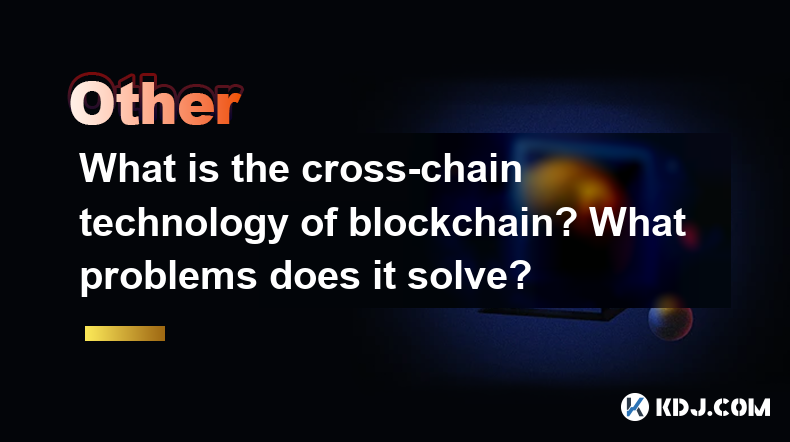
Understanding Cross-Chain Technology in Blockchain
Cross-chain technology refers to the ability of different blockchain networks to interact and exchange information or assets with each other. Imagine separate islands, each with its own unique currency and system. Cross-chain technology acts as a bridge, allowing these islands to trade and communicate freely. This is crucial because many blockchains operate independently, limiting interoperability. Without cross-chain technology, transferring assets between different blockchains is often impossible or extremely complex.
Problems Solved by Cross-Chain Technology
The lack of interoperability between different blockchain networks presents several significant challenges. Cross-chain technology addresses these by facilitating seamless asset transfer and data sharing. This enhances the overall utility and efficiency of the blockchain ecosystem.
Limited Interoperability: Different blockchains often use different consensus mechanisms, programming languages, and security protocols. This makes direct communication and asset transfer extremely difficult. Cross-chain bridges overcome this limitation.
Fragmented Ecosystem: The absence of interoperability leads to a fragmented blockchain ecosystem. This limits the potential for growth and innovation, as projects are often confined to their respective networks. Cross-chain solutions help unify this fragmented landscape.
Inefficient Asset Transfer: Moving assets between different blockchains can be slow, expensive, and complex. Cross-chain technology offers faster, cheaper, and more efficient transfer methods. It streamlines the process considerably.
Lack of Scalability: Individual blockchains may face scalability issues, limiting their transaction throughput. Cross-chain technology can help alleviate this by distributing the workload across multiple networks.
How Cross-Chain Technology Works: A Deep Dive
Several different approaches exist for achieving cross-chain communication. Each method has its own strengths and weaknesses concerning security, speed, and complexity. Here are some common techniques:
Atomic Swaps: This method uses cryptographic techniques to enable the direct exchange of assets between two blockchains without the need for a third-party intermediary. This ensures a high level of security and decentralization. However, it's often limited to specific types of assets and can be complex to implement.
Hash Time-Locked Contracts (HTLCs): HTLCs are smart contracts that allow for conditional payments across different blockchains. They ensure that funds are only released if certain conditions are met, providing a level of security and trust. This is a widely used approach for cross-chain transactions.
Sidechains: A sidechain is a separate blockchain that is pegged to a mainchain. Assets can be transferred between the mainchain and the sidechain, providing scalability and enhanced functionality. However, the security of the sidechain is dependent on the security of the mainchain.
Relays: Relays act as intermediaries between different blockchains, facilitating communication and asset transfers. They can be more efficient than other methods, but introduce a degree of centralization and trust in the relay operator.
Bridges: Bridges are similar to relays, but often involve more sophisticated mechanisms for ensuring security and trust. They can handle more complex cross-chain interactions, but may still rely on centralized components.
Security Considerations in Cross-Chain Technology
Security is paramount in cross-chain technology. Vulnerabilities in any part of the system can lead to significant losses. Careful consideration must be given to the security of smart contracts, cryptographic algorithms, and the overall architecture of the cross-chain solution. Regular audits and security assessments are crucial. The reliance on third-party intermediaries in some solutions also raises concerns about centralization and potential points of failure.
The Future of Cross-Chain Technology
Cross-chain technology is still evolving, with ongoing research and development focused on improving security, scalability, and interoperability. The future likely holds more sophisticated and efficient cross-chain solutions that enable seamless interaction between diverse blockchain networks. This will contribute to a more integrated and interconnected blockchain ecosystem.
Frequently Asked Questions
Q: What are the benefits of cross-chain technology?
A: Cross-chain technology offers numerous benefits, including increased interoperability, improved asset transfer efficiency, enhanced scalability, and a more unified blockchain ecosystem.
Q: What are the risks associated with cross-chain technology?
A: The risks include security vulnerabilities, potential for centralization in some solutions, and complexity in implementation.
Q: How secure is cross-chain technology?
A: The security of cross-chain technology varies depending on the specific implementation. Some methods, like atomic swaps, offer high security, while others rely on centralized intermediaries, which introduce potential vulnerabilities.
Q: What are some examples of cross-chain projects?
A: Numerous projects are exploring cross-chain technology, including Cosmos, Polkadot, and various bridge protocols built on Ethereum. These projects use different approaches to achieve cross-chain interoperability.
Q: Will cross-chain technology replace individual blockchains?
A: It's unlikely that cross-chain technology will replace individual blockchains entirely. Instead, it's more likely to facilitate greater interoperability and collaboration between different blockchain networks. Each blockchain will likely retain its unique characteristics and functionality.
Q: How does cross-chain technology impact DeFi?
A: Cross-chain technology is crucial for the growth of Decentralized Finance (DeFi). It enables the creation of cross-chain DeFi applications and allows users to easily move assets between different DeFi platforms. This enhances liquidity and opens up new opportunities for innovation within the DeFi space.
Disclaimer:info@kdj.com
The information provided is not trading advice. kdj.com does not assume any responsibility for any investments made based on the information provided in this article. Cryptocurrencies are highly volatile and it is highly recommended that you invest with caution after thorough research!
If you believe that the content used on this website infringes your copyright, please contact us immediately (info@kdj.com) and we will delete it promptly.
- How XRPL Utility Can Support Token Price Growth
- 2025-04-04 05:35:12
- Long-dormant Bitcoin wallets have suddenly sprung to life
- 2025-04-04 05:35:12
- ExoraPad ($EXP), an innovative AI-powered launchpad exclusively developed for the XRP Ledger (XRPL), has reached an impressive milestone
- 2025-04-04 05:30:12
- XRP Price Surge Could Enable Early Retirement for Numerous Investors
- 2025-04-04 05:30:12
- XRP Price Prediction: Will XRP Bounce From This Support Or Continue Its Descent?
- 2025-04-04 05:25:12
- As US Treasury yields hit 6-month lows, Bitcoin (BTC) price may be poised for a breakout
- 2025-04-04 05:25:12
Related knowledge
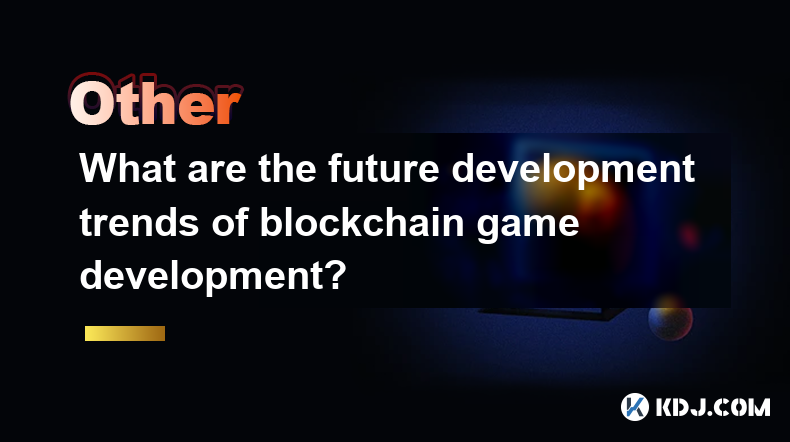
What are the future development trends of blockchain game development?
Apr 03,2025 at 05:00am
Blockchain technology has revolutionized various industries, and gaming is no exception. As we look to the future, several trends are set to shape the development of blockchain games. These trends not only promise to enhance the gaming experience but also to integrate blockchain technology more seamlessly into the gaming ecosystem. Let's explore these t...
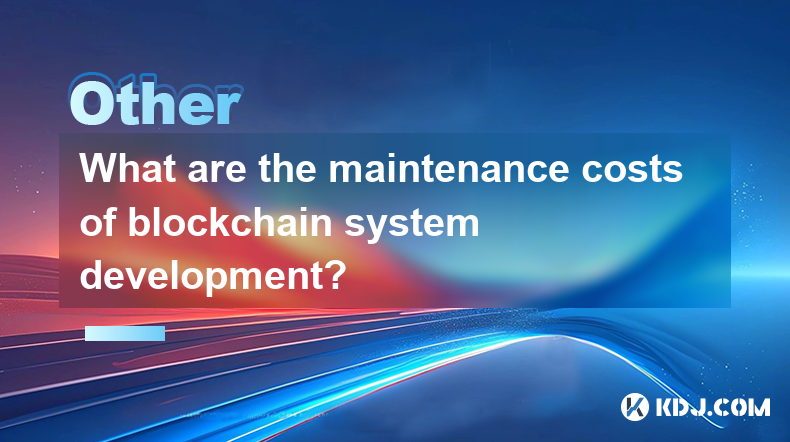
What are the maintenance costs of blockchain system development?
Apr 03,2025 at 06:07pm
The maintenance costs of blockchain system development are multifaceted and depend on various factors. These costs can include technical maintenance, security updates, infrastructure expenses, and personnel costs. Understanding these elements is crucial for anyone planning to develop or maintain a blockchain system. Technical MaintenanceTechnical mainte...
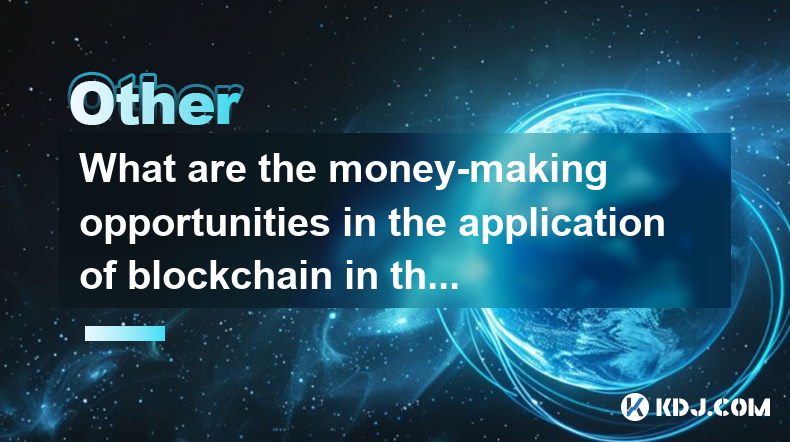
What are the money-making opportunities in the application of blockchain in the medical industry?
Apr 03,2025 at 03:35am
The integration of blockchain technology into the medical industry presents a myriad of money-making opportunities that can revolutionize healthcare systems. Blockchain's inherent characteristics, such as transparency, security, and immutability, make it an ideal solution for various medical applications. By leveraging blockchain, companies can develop ...
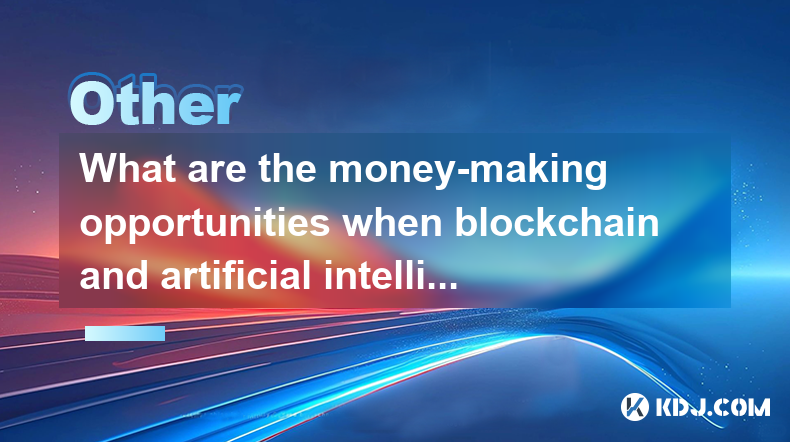
What are the money-making opportunities when blockchain and artificial intelligence are combined?
Apr 04,2025 at 01:28am
The convergence of blockchain and artificial intelligence (AI) presents a myriad of money-making opportunities within the cryptocurrency circle. This fusion leverages the decentralized and secure nature of blockchain with the analytical prowess of AI, creating innovative solutions and platforms that can generate significant revenue. From enhancing tradi...
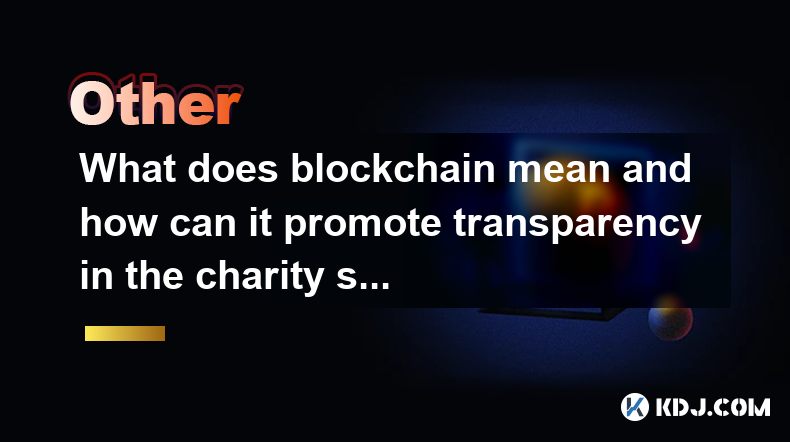
What does blockchain mean and how can it promote transparency in the charity sector?
Apr 03,2025 at 08:29pm
Blockchain technology is a decentralized, distributed ledger that records transactions across numerous computers. This ensures that the data is transparent and nearly impossible to alter retroactively. Essentially, blockchain serves as a digital ledger of all cryptocurrency transactions, enabling secure and direct exchanges without the need for intermed...
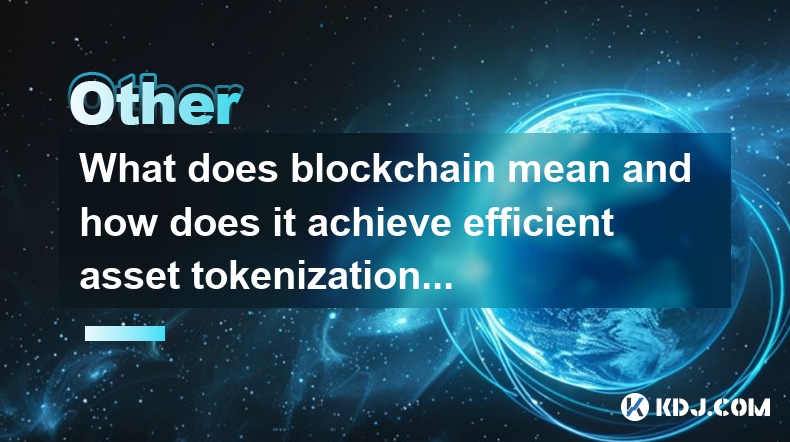
What does blockchain mean and how does it achieve efficient asset tokenization?
Apr 03,2025 at 07:57pm
Blockchain technology is a decentralized, distributed ledger that records transactions across numerous computers. It ensures that each transaction is secure, transparent, and immutable. The concept of blockchain was introduced with the launch of Bitcoin in 2009, but its applications have since expanded far beyond cryptocurrencies. At its core, blockchai...

What are the future development trends of blockchain game development?
Apr 03,2025 at 05:00am
Blockchain technology has revolutionized various industries, and gaming is no exception. As we look to the future, several trends are set to shape the development of blockchain games. These trends not only promise to enhance the gaming experience but also to integrate blockchain technology more seamlessly into the gaming ecosystem. Let's explore these t...

What are the maintenance costs of blockchain system development?
Apr 03,2025 at 06:07pm
The maintenance costs of blockchain system development are multifaceted and depend on various factors. These costs can include technical maintenance, security updates, infrastructure expenses, and personnel costs. Understanding these elements is crucial for anyone planning to develop or maintain a blockchain system. Technical MaintenanceTechnical mainte...

What are the money-making opportunities in the application of blockchain in the medical industry?
Apr 03,2025 at 03:35am
The integration of blockchain technology into the medical industry presents a myriad of money-making opportunities that can revolutionize healthcare systems. Blockchain's inherent characteristics, such as transparency, security, and immutability, make it an ideal solution for various medical applications. By leveraging blockchain, companies can develop ...

What are the money-making opportunities when blockchain and artificial intelligence are combined?
Apr 04,2025 at 01:28am
The convergence of blockchain and artificial intelligence (AI) presents a myriad of money-making opportunities within the cryptocurrency circle. This fusion leverages the decentralized and secure nature of blockchain with the analytical prowess of AI, creating innovative solutions and platforms that can generate significant revenue. From enhancing tradi...

What does blockchain mean and how can it promote transparency in the charity sector?
Apr 03,2025 at 08:29pm
Blockchain technology is a decentralized, distributed ledger that records transactions across numerous computers. This ensures that the data is transparent and nearly impossible to alter retroactively. Essentially, blockchain serves as a digital ledger of all cryptocurrency transactions, enabling secure and direct exchanges without the need for intermed...

What does blockchain mean and how does it achieve efficient asset tokenization?
Apr 03,2025 at 07:57pm
Blockchain technology is a decentralized, distributed ledger that records transactions across numerous computers. It ensures that each transaction is secure, transparent, and immutable. The concept of blockchain was introduced with the launch of Bitcoin in 2009, but its applications have since expanded far beyond cryptocurrencies. At its core, blockchai...
See all articles






















































































